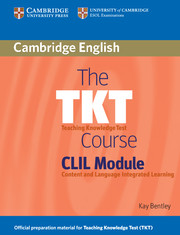Unit 3 - Communication skills across the curriculum
Published online by Cambridge University Press: 27 September 2023
Summary
What is the role of communication skills in CLIL?
Learners need to develop communication skills for curricular subjects. They need to express and interpret facts, data, thoughts and feelings, both in writing as well as orally. Communication skills are important for expressing ideas about subject content and to help learners work well together.
In some CLIL subjects, communication skills may be given less importance and there are cultural considerations which vary from country to country, from region to region, from school to school. In all contexts, however, interaction is part of learning. The European Commission for Education and Culture states that CLIL should ‘enable pupils to develop language skills which emphasise effective communication … for real practical purposes’ (Eurydice Survey, 2006).
Key concepts
Which communicative functions are needed for CLIL?
To develop communicative competence, or oracy, learners in CLIL need communicative functions (purposes for speaking or writing) from different subjects. They need examples of these functions to help them communicate their knowledge of the subject content.
Some CLIL books provide examples of functions for teachers and learners. Look at the examples from a CLIL coursebook and the communicative functions they express. Other examples of communicative functions used when teaching curricular subjects include: expressing agreement or disagreement; clarifying what has been said; describing cause and effect; explaining an opinion; expressing ideas and opinions; generalising; giving instructions; giving approximate numbers; interpreting data; predicting and justifying predictions; presenting solutions; suggesting.
In some CLIL contexts, use of L1 for communication is a teaching and learning strategy. Use of L1 is not only for translation. It is part of sense making. Use of L1 and the target language by both teachers and learners for specific purposes is described as integrated language or code switching. Sometimes we help learners to understand the curriculum content by using bilingual techniques. Some learners use L1 to justify a point, to explain, to check understanding or to repeat.
Key concepts and the CLIL classroom
We need to plan opportunities for learners to develop their communication skills in different subjects within the classroom, with other classes in the school and with the local or wider community.
- Type
- Chapter
- Information
- The TKT Course CLIL Module , pp. 16 - 19Publisher: Cambridge University PressPrint publication year: 2010

